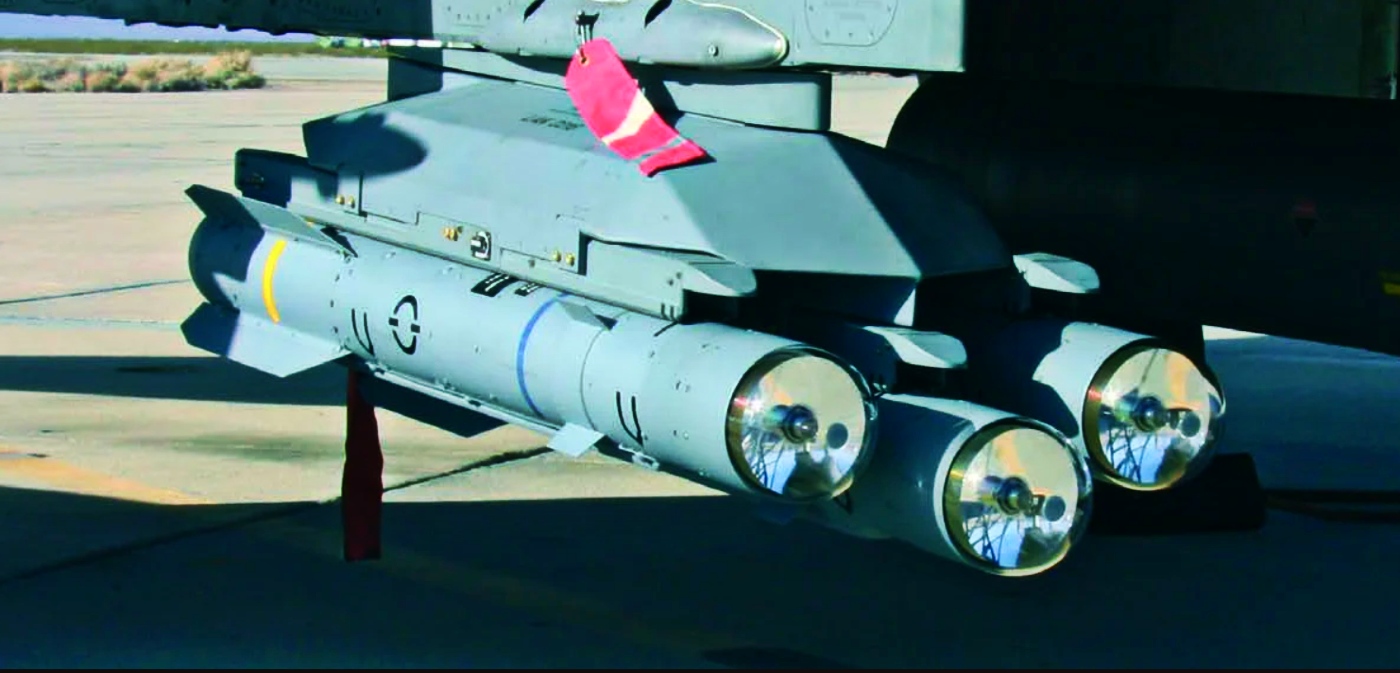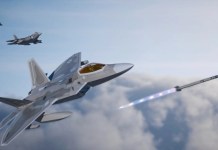On August 23, 2023, Ukraine released drone footage of its anti-shipping missile purportedly striking an S-400 AD system in Cape Tarkhankut in Crimea. The Rybar TC (Telegram Channel) claims that the target hit was an S-300 system and a fuel truck, and the missile used was Brimstone-2 launched from a Ukrainian boat.
It may be recalled that the Russian Ministry of Defense (RuMoD) earlier announced that on the night of August 22, the crew of a Su-30SM aircraft of the Black Sea Fleet’s Naval Aviation destroyed an Armed Forces of Ukraine (AFU) reconnaissance boat near a Russian gas platform in the Black Sea.
The attack reportedly took place at around 4 a.m. and involved a watercraft 38 km west of Cape Tarkhankut. The boat carried a GRU landing group.
There is some doubt about the missile used to strike the S-300 system on August 23, with the Military Informant TC saying it was a Storm Shadow missile. The explosion following the impact of the missile was powerful but indicative more of secondary detonation than the use of a powerful warhead.
While much has been written about the capabilities of the British Storm Shadow stealth cruise missile and its French analog Scalp EG, not so much is widely known about the Brimstone.
Brimstone Missile
The Brimstone missile was first supplied to Ukraine by Britain in April 2022 as part of its aid package.
In November 2022, The Washington Post, quoting the British MoD, reported that Britain is providing Ukraine with Brimstone 2 missiles. The number involved was not specified.
The Brimstone is a small (50-kg) air-launched, rocket-propelled anti-tank missile with a 6.3 kg HEAT tandem-shaped warhead. It was inducted into British service in 2005. The missile was intended to be launched from fighter aircraft, helicopters, and drones.
Brimstone is a “fire-and-forget” missile loaded with targeting data by the weapon systems officer (WSO) before launch. It features a dual-mode guidance system, combining semi-active laser (SAL) guidance and millimeter-wave radar (MMW) guidance.
SAL guidance requires drone or ground-based laser marking in good visibility conditions. MMW guidance is the fall in limited visibility or when the target is obscured by smoke.
Brimstone 2
Brimstone 2 is a larger, longer-ranged variant inducted into service in 2016. It has twice the range (60+ km when launched from a fighter and 40+ km from a helicopter) of Brimstone 1. Because of its longer range, the Brimstone 2 has an inertial navigation system that takes the missile to the target area on autopilot before letting its dual-mode warhead choose its target autonomously.
During its development, the Brimstone missile has been adapted for ground launch. Interestingly, according to Wikipedia, on May 29, 2013, missile developer MBDA conducted a salvo firing of three millimetric wave operational Brimstone missiles, launched from a fixed offshore platform, against a simulated attack formation of five targets representing FIACs (Fast Inshore Attack Craft).
In May 2023, there were reports of British Special Services presence in the Odesa region and other areas, teaching AFU personnel to operate Brimstones, Neptunes, and Harpoons.
Analysis
The Brimstone missile is best suited for attacking moving targets, specifically armor. On May 17, 2022, Ukrainian sources claimed that ground-launched Brimstone missiles had destroyed two Russian targets. There were no subsequent reports of Brimstone use.
A S-300 battery isn’t a single target. It comprises many well-spread targets – supporting radars, control vehicles, and multiple launchers – placed at distances, ruling out destruction by a single weapon strike.
As such, it would make sense to attack a S-300 battery using a salvo of at least 9 to 15 missiles. Indeed, Brimstone missiles are optimized for salvo launch. The air-launched variant is launched using a pylon launcher capable of carrying three missiles.
Unfortunately, in the context of the Ukrainian conflict, the limited range of the Brimstone missile and the lethality of the Russian AD network rule out salvo launch of Brimstone missiles using fighter aircraft.
Launching Brimstones from fast-moving boats that can sneak in close to the Crimean coast is a good tactic. By using multiple boats, it would be possible to carry out a salvo attack.
This could explain why there are reports that on the night of August 22, several Ukrainian boats attempted to come close to the Crimean coast; only one was engaged and destroyed by a Russian Navy Su-30SM through gun strafing.
Brimstone launch from a boat would give Russian air defense practically no warning. Assuming a minimum launch range of 20 km for the surface-launched variant of the missile, the very short time between launch and impact on the target would make interception difficult.
Brimstone missiles launched from boats to strike at Russian AD systems, such as an S-300 battery, make more sense than striking them with Storm Shadow missiles.
The Storm Shadow has a much heavier and more lethal warhead. However, to attack Crimea, it would have to be launched from well within Ukraine-controlled airspace, staying well away from long-range Russian AD systems and Russian fighters armed with long-range RVV-BD air-to-air missiles.
Russian A-50/A-100 AWACS likely detect Storm Shadow launch platforms (Su-24) soon after they get airborne, or at least well before arriving at their launch point. As such, in the case of a Storm Shadow attack, plenty of warning allows Russian AD systems en route to optimize interception.
The lethality of the Storm Shadow’s 450-kg warhead notwithstanding, it could not destroy more than one target in an S-300 battery. Considering how expensive the Storm Shadow is, its use in such a scenario would make little sense.
Whether the Russians like it or not, Storm Shadow is best suited to attack logistics and command infrastructure such as storage depots, bridges, and field headquarters.

Conclusion
NATO satellite and airborne ISR assets flying in the Black Sea area, which can pinpoint and determine the operational state of Russian AD systems, combined with British weapons and training, have given Ukraine a difficult-to-counter operational edge with sea-going speed boats and Brimstone missiles.
An edge that Russia simply cannot eliminate because of its minimal and very stretched drone or satellite-based ISR capability. Fortunately for Russia, the ability of boat-launched ATGMs to erode its overwhelming superiority in military power is limited.
- Vijainder K Thakur is a retired IAF Jaguar pilot. He is also an author, software architect, entrepreneur, and military analyst. VIEWS PERSONAL
- Follow the author @vkthakur




